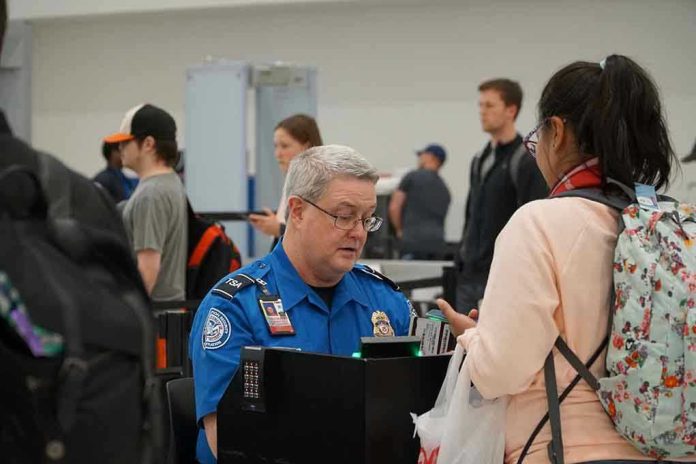
Inconsistencies in TSA screening procedures continue to frustrate travelers, highlighting operational inefficiencies that many feel undermine security and individual freedoms.
Story Overview
- The TSA, established post-9/11, faces ongoing criticism for inconsistent screening procedures.
- Travelers report unpredictability and stress due to varied enforcement of security measures.
- Efforts to standardize procedures continue, but challenges persist due to human factors.
- Calls for policy reforms and increased automation to improve consistency and efficiency grow.
TSA’s Establishment and Evolution
The Transportation Security Administration (TSA) was established in response to the September 11 attacks, aiming to bolster airport security by federalizing screening processes. Initially, the TSA took over all commercial airline passenger and baggage screening. Over the years, the agency adapted its procedures to evolving threats, such as the shoe bomber and liquid explosives, leading to frequent and sometimes abrupt changes in security protocols.
Despite these adaptations, the TSA faces persistent criticism over its effectiveness and consistency. Travelers frequently express frustration with the varied enforcement of security measures, such as liquid bans and electronics screening, which differ not only from airport to airport but even between different screening instances.
Challenges in Standardization
One of the primary challenges the TSA faces is the standardization of its procedures across over 450 U.S. airports. While the agency’s mission is to balance security with the freedom of movement, it struggles to maintain consistency due to diverse locations and staff. The discretion afforded to Transportation Security Officers (TSOs) in applying procedures further contributes to variability, undermining traveler confidence.
Efforts to improve consistency include technological upgrades, staff training initiatives, and public outreach campaigns. However, these measures are often hampered by human factors and local variations, which make it difficult to achieve a uniform experience for all travelers.
Impact and Future Considerations
The inconsistency in TSA procedures has significant short-term and long-term implications. In the short term, it leads to continued traveler frustration and potential negative media coverage, further decreasing public trust in the agency. In the long term, there are calls for policy reforms, increased automation, and further centralization of procedures to reduce human error and discretion.
TSA Apparently Considered Terry Bradshaw a Potential 'Threat' – He Didn't Find it Amusinghttps://t.co/PSnufQQXPc
— RedState (@RedState) August 5, 2025
These challenges affect not only travelers but also the TSA workforce, which faces public scrutiny and operational challenges. The broader travel and tourism industry may also experience ripple effects, impacting related sectors such as hospitality and business travel. As debates over the balance between security and civil liberties continue, potential legislative action may be necessary to address these ongoing issues.
Sources:
Wikipedia: Transportation Security Administration
Department of Homeland Security: Transportation Security
Congressional Research Service: TSA Challenges and Reforms














